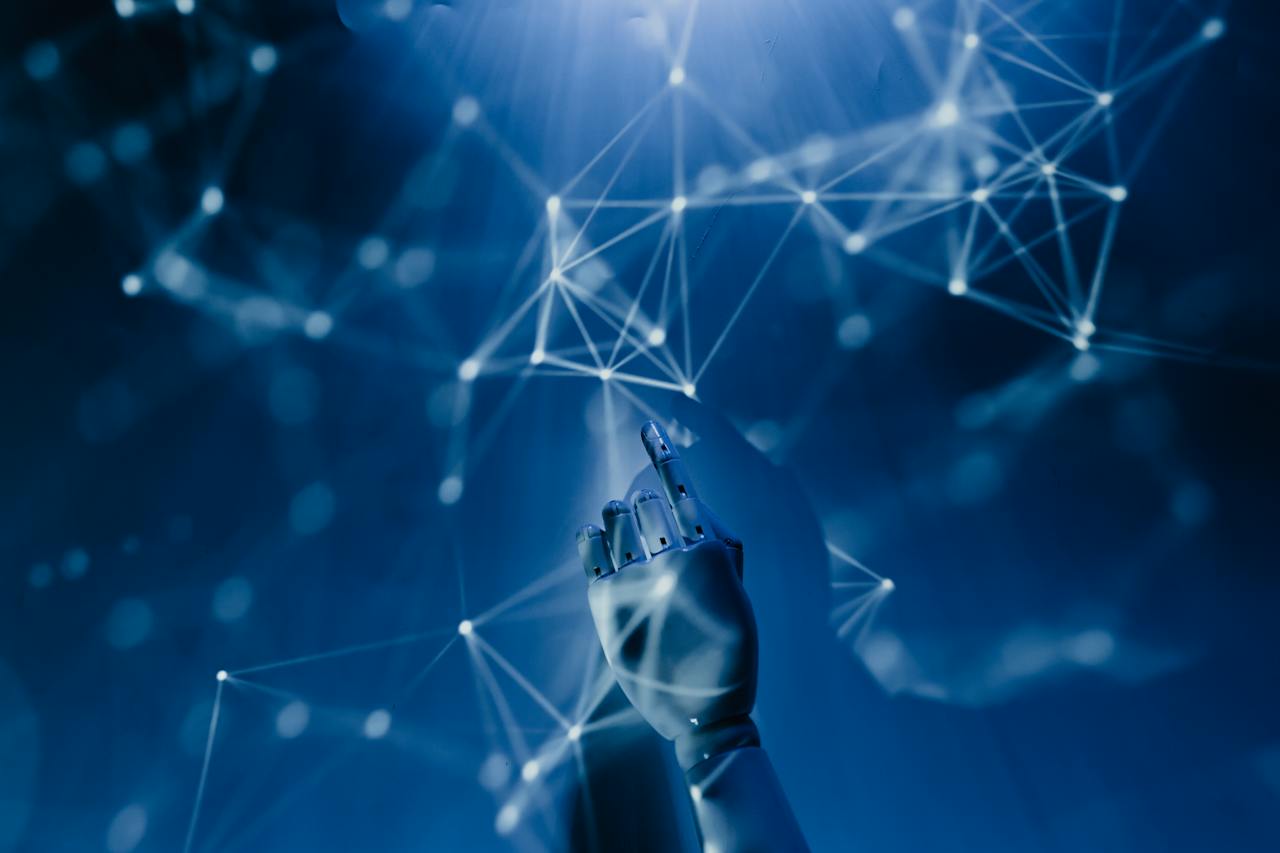The Evolution of Chatbots
Chatbots has undergone a remarkable transition over the years. Initially, they were simple programs that could only comprehend and respond to essential management. But as machine learning (ML) and natural language processing (NLP) algorithms have advanced, chatbots have also become more intelligent and able to manage intricate discussions. This whitepaper offers a thorough chatbot creation and evolution history, detailing their beginnings, significant turning points, and revolutionary effects on various businesses. From primary written responses to intelligent conversational agents, chatbots have come a long way. This blog traces the history of chatbots, identifies significant turning points, and looks forward to their future. To learn more about this, continue reading the blog.
What are AI chatbots?
Chatbots, a term coined from “chat” and “robots,” are computer programs that simulate human conversation. A chatbot is a computer program that develops human-like text, leading to a two-way conversation between the human user and the chatbot. Chatbots utilise artificial intelligence and natural language processing to simulate human-like communication or provide the user with the desired response. The chatbot aims to convey human-like text to the user as if they are articulating to a human.
What are the uses of AI chatbots?
- A quick response to customer queries strengthens the client-company relationship.
- The use of chatbots assures the 24/7 availability of customer service to clients and business customers.
- Chatbots can handle and provide answers to FAQs, reviews, emails, chat, and order tracking, thus improving the flexibility and dependability of customer services.
- Businesses in the medical field also use chatbots to assist patients around the clock, seven days a week. A business owner can devote more personnel to complex and intricate jobs rather than repeated ones because of chatbots.
- Chatbots are a valuable tool for businesses to enhance customer service. Users can tell the chatbot on their phone to adjust its settings.
- For requesting items, we can’t find on our phones and creating reminders.
- Advanced chatbots assist in the treatment of patients experiencing physiological problems.
Evolution of ChatGPT
Alan Turing first proposed the idea of the Turing test as a standard of intelligence in his well-known paper “Computing Machinery and Intelligence,” issued in 1950. This criterion relies on a computer program’s ability to pass the Turing test on a human in real-time. Here are some of the significant ways the software got upgraded.
Eliza 1964-1966
Joseph Weisenbaum created Eliza, the first chatbot in history, between 1964 and 1966. At MIT, Joseph Weisenbaum held the position of professor. Eliza was designed to employ pattern-matching algorithms to produce a conversation that sounds human.
The designer of Eliza believes that since it is the first artificial intelligence chatbot, it will assist patients in resolving psychological issues. It will undoubtedly aid in their quick recovery in addition to the treatment. Conversely, other people claimed that Eliza could not speak with proper comprehension.
Parry 1972
This is the improved or upgraded version of Eliza, invented by Keneth Colby, a psychiatrist at Stanford University, in 1972. It could imitate a patient with schizophrenia (a psychological illness consisting of symptoms like hallucinations, delusions, disorganisation, etc.). Using a conversational approach, this chatbot was externalised to assist those experiencing similar psychological challenges.
Jabberwocky, 1988
Rollo Carpenter, a British programmer, created this. The immediate goal of Jabberwacky was to imitate human chat in an amusing, humorous, and exciting manner. It was well understood for providing a text that was witty and hilarious. Jabberwacky also uses the pattern-matching technique to transmit with humans.
Aimee and Alice 1990
Higher-tech chatbots such as Aimee and Alice were first presented in the late 1990s. A.L. Hutchings created Aimee in 1996 to simulate a conversation with an adolescent female. It demonstrated a more advanced method of understanding natural language and produced outputs that more closely resembled human speech.
1995 saw the introduction of ALICE, an acronym for Artificial Linguistic Internet Computer Entity, another noteworthy turning point. In order to have discussions, Alice used a rule-based approach and kept a sizable database of responses and trends. Its main claim to fame was its participation in the yearly Turing Test for the Loebner Prize, which assesses conversational AI.
SmarterChild 2001
In the early 2000s, ActiveBuddy created the well-known chatbot SmarterChild, which Microsoft eventually purchased. It became famous as an engaging and talkative bot that functioned on several instant messaging (IM) services, such as Windows Live Messenger (MSN Messenger) and AOL Instant Messenger (AIM). SmarterChild was created to function as a chatbot on well-known instant messaging services. SmarterChild allows users to engage with it through a chat-like interface by adding it to their contact list.
Siri 2011
Siri is a virtual assistant and chatbot developed by Apple, Inc. It was first presented on the iPhone 4S in October 2011. In addition to answering questions and responding to orders in natural language, Siri may also be used to carry out activities, give users information, and enable voice-based interactions with Apple devices. Sending messages, setting alarms, checking the weather, making phone calls, browsing the internet, and managing smart home appliances are just a few things Siri can do. With Siri’s voice feedback component, users can hear spoken responses to their queries. When engaging in other hands-free activities, this capability is beneficial.
Google Assistant
Google began developing Google Assistant on May 18, 2016. You may either speak or text directions to Google Assistant. Users can even ask Google Assistant to modify system settings and set reminder alarms. Google, the firm that created the virtual assistant, has revealed that shortly, the assistant will be able to identify items and things and aid with conducting money transfers and making purchases.
ChatGPT 2020
This is the latest and most convenient AI being used at present. OpenAI’s GPT-3 (Generative Pre-trained Transformer 3) model powers ChatGPT, an everyday AI chatbot. One of the most cultivated language models, GPT-3, creates text-based interactions that resemble human communication. This can contextualise talks, allowing them to respond coherently, even in dialogues with multiple turns. It recalls details that were discussed before in the discussion.
Summing it up,
This blog has listed all the major AI chatbots that are making the technology more advanced and convenient for every user, whether on Android phones or iPhones or on the Windows screen. The growth of chatbots from basic text-based programmes to cultured AI-driven virtual assistants has been an incredible journey. They have become essential to contemporary technological ecosystems, revolutionised industries, and enhanced customer service. As AI develops further, even more breakthroughs are anticipated in the future. But as chatbots grow increasingly ingrained in our daily lives, they will be crucial to solving ethical issues, guaranteeing justice, and maximising human-AI collaboration.
To get access to all the AI-powered technologies or chatbots for your business, you can connect with Nettfy Technologies. It has innovative and advanced tech features that will blow your mind. We have customised services that meet your design speed and development needs. Our distinctive, responsive UX and UI designs promise a seamless, cross-platform user experience. At Nettfy Technologies, you will get the most excellent software solutions for any business’s requirements, thanks to our outstanding team members and extensive experience across numerous sectors.


